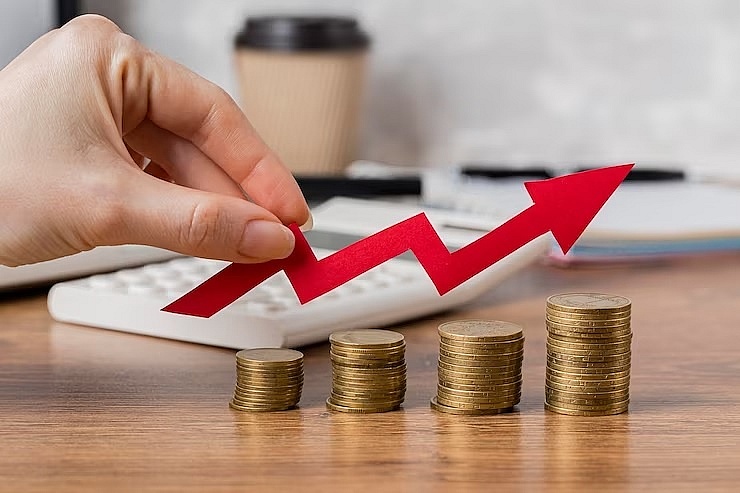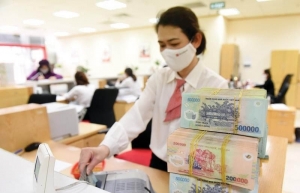Interest rate cuts alone deemed insufficient
In respect to a reduction in interest rates from the central bank effective from May 25, the director of one exclusive auto import firm disclosed, “Our company imports several hundreds to thousands of cars quarterly. We therefore need to borrow about $13-17 million from banks, and a softened interest rate will have a big impact on the company’s operation.”
 |
| Interest rate cuts alone deemed insufficient / illustration photo/ Source: freepik.com |
Meanwhile, Phan Thanh Tinh, director of Viet Au Seafood Co., Ltd. based in the southern province of Dong Nai, said the lower interest rate was important, but production firms needed more help.
“For businesses with loans, lower interest rates are necessary, but for manufacturing firms eyeing 60-70 per cent cuts in their revenue, this move is less significant as without orders, firms can hardly run their businesses,” said Tinh.
He added that formerly the company exported two to three shipments weighing 20-30 tonnes each day, but it was now reduced to just one shipment a day.
“We only exported three to four shipments in the whole of April. The purchasing power in the US, EU and China took a plunge of 70 per cent, or at least 50 per cent on-year. The current dilemma that businesses face is not entirely attributed to interest rate issues. Reduced domestic consumption, or lower demand, comes from diverse domestic factors,” said Tinh.
The director of a firm that often transports consumer goods from Ho Chi Minh City to other southern locations said that formerly each day the company had about 30 trucks in operation, but it was now reduced to just one truck; and the goods transport volume shed 80-90 per cent.
“Lower interest rates do not have a direct impact on our firm, but I expect this positive move will underpin the overall economic rebound,” he said.
Yun Liu, a Southeast Asian market economist at HSBC, said that as Vietnam’s production was mainly export-driven, the country’s weakening imports would signal a possible slow rebound of exports in the future. Broad-based weakened exports will weigh on Vietnam’s growth prospects.
According to the State Bank of Vietnam (SBV), as of mid-May, total outstanding balances in the whole banking system approximated $534.7 billion, up 2.72 per cent compared to late December 2022.
Deputy Governor Dao Minh Tu noted that credit management posed multiple challenges to the banking sector as banks needed to satisfy the capital demand for production, business, as well as socioeconomic rebound and development, simultaneously ensuring safety for the operation of credit institutions as firms are grappling with numerous hardships in production and business.
“This could lead to the failure to pay debts on time, turn the debts into bad debts, and from there they will hardly be able to take further loans to maintain or restore production and business,” said Tu.
Tran Cong Quynh Lan, deputy general director at VietinBank, said that in practice the effect of interest rate reduction was not instantly visible, yet it had a long-term effect, and firms’ capacity for capital access was crucial.
“For small- and medium-sized enterprises, capital access capacity, swift lending process, and simple procedures are deemed the most important issue. It is essential to kick up demands,” said Lan.
Meanwhile, the Asian Development Bank (ADB) assumed that public investment would be the game changer to motivate rebound efforts for Vietnam’s economy this year and beyond.
Accordingly, the Vietnamese government is committed to disbursing $30 billion of public investment this year, of which 90 per cent has been allocated to ministries, sectors and localities for disbursement right from the first months of 2023.
“Accelerating disbursement of this big sum is crucial. In parallel to further expediting the economic rebound programme approved last January, this huge sum is expected to create a multitude of effects, bringing multidimensional impacts, greatly motivating the whole economy,” the ADB said.
| Nguyen Thi Hong - Governor, State Bank of Vietnam
Regarding access restriction to credit sources, it is necessary to conduct thorough analyses of the reasons, from there being able to present the right solutions. In terms of mechanism, the lending policies remain intact. Banking sector credit expanded 14.16 per cent in 2022, yet it only grew about 3 per cent in the first five months of this year. We can’t put the blame on the policy aspect as there is no change in the lending policies. Credit institutions have ample credit sources, and the banking sector’s liquidity has always been ensured by the SBV. Hence, there is no reason for which credit institutions raise capital and pay interest to depositors, then don’t lend out to businesses who are eligible to take on loans. |
 | Falling interest rates likely in H2 On May 23, the SBV announced additional adjustments to a series of key interest rates, effective from May 25. This move marks the third round of reductions designed to boost the economy in less than three months. Interest rates are predicted to soften in the second half of the year, due to several factors in both the domestic and international markets. |
 | Rate reductions deemed well-timed The latest initiative from Vietnam’s central bank to introduce a round of interest rate reductions within a condensed timeframe is regarded as a favourable stride aimed at invigorating economic expansion. |
What the stars mean:
★ Poor ★ ★ Promising ★★★ Good ★★★★ Very good ★★★★★ Exceptional
Related Contents
Latest News
More News
- Tax sector wraps up 2025 and sets priorities for next year (December 25, 2025 | 14:00)
- A tipping point for digital and hybrid wealth management in Vietnam (December 23, 2025 | 13:33)
- $250 million deal targets women-owned SMEs, sustainable agriculture (December 22, 2025 | 17:40)
- Stock market posts resilient 2025 performance (December 19, 2025 | 18:17)
- Citi Vietnam receives 2025 AmCham CSR recognition (December 19, 2025 | 16:35)
- As global green supply chain reshapes, will Vietnam be left behind? (December 19, 2025 | 08:00)
- Banks gear up for massive capital increases (December 18, 2025 | 17:04)
- Securing capital and efficiency for Vietnam’s 2026-2030 growth ambitions (December 17, 2025 | 10:00)
- Energy sector in need of blended finance mechanisms (December 17, 2025 | 09:00)
- Vietnam still has room to mobilise capital for sustainable growth (December 17, 2025 | 08:57)


 Tag:
Tag:





















 Mobile Version
Mobile Version